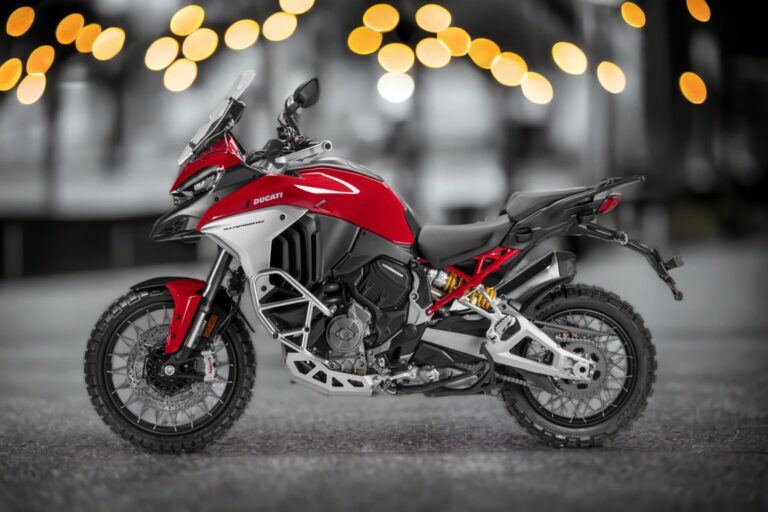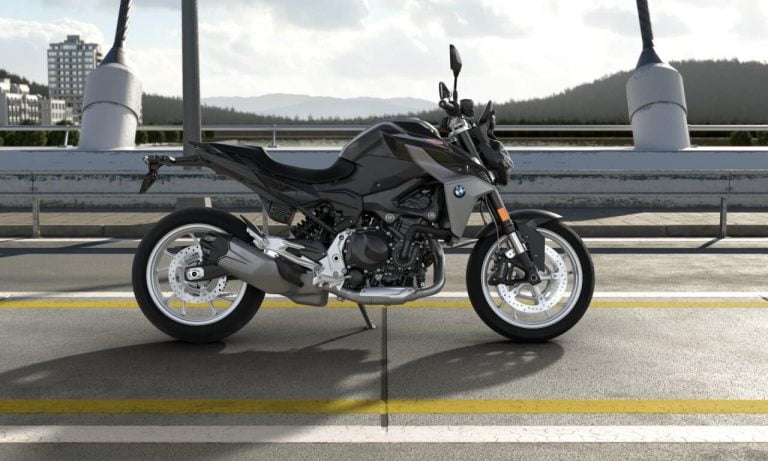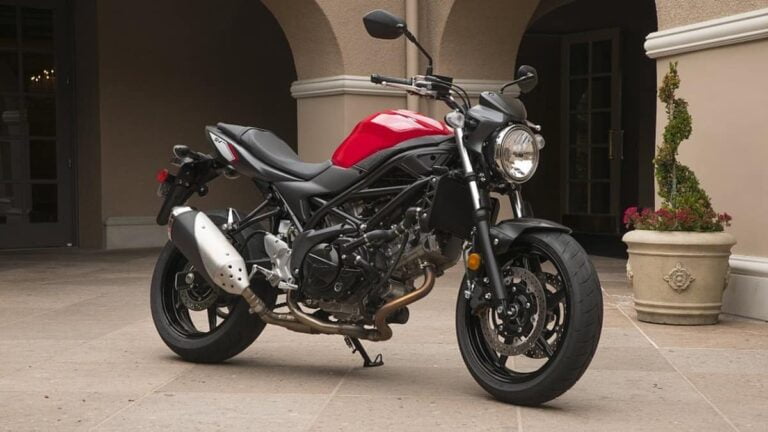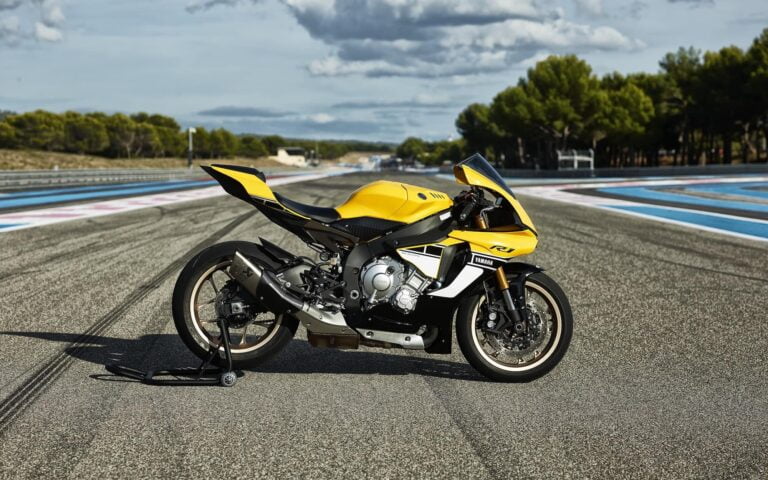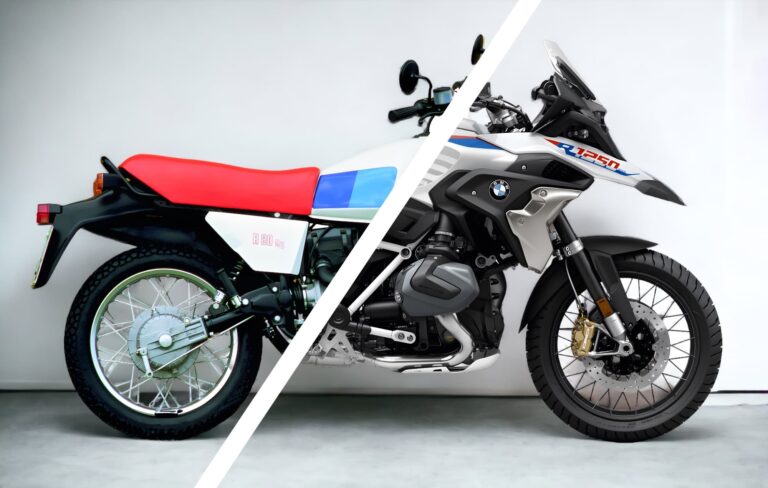In October 2024, Yamaha released the Yamaha YZF-R9 for the 2025 model year. This is the fifth motorcycle (if you group the others together logically) from Yamaha to use the CP3 three-cylinder engine, coming after the FZ-09/MT-09 that started it all, the FJ-09/Tracer 900 / Tracer 9 touring bike, the XSR900 (including the different but similarly-named XSR900 GP) that brought “retro style” to the range, and the 3-wheeled Niken — you forgot about that one, didn’t you? (I did!)
Because there are so many different bikes that share an engine, it’s worth looking at the Yamaha YZF-R9 to understand where it stands in relation to
- Other CP3-powered bikes,
- Other sport bikes in general, and
- Yamaha’s family of sport bikes it has mostly retired from the road (most notably the R6 and R1).
Let’s dive in!
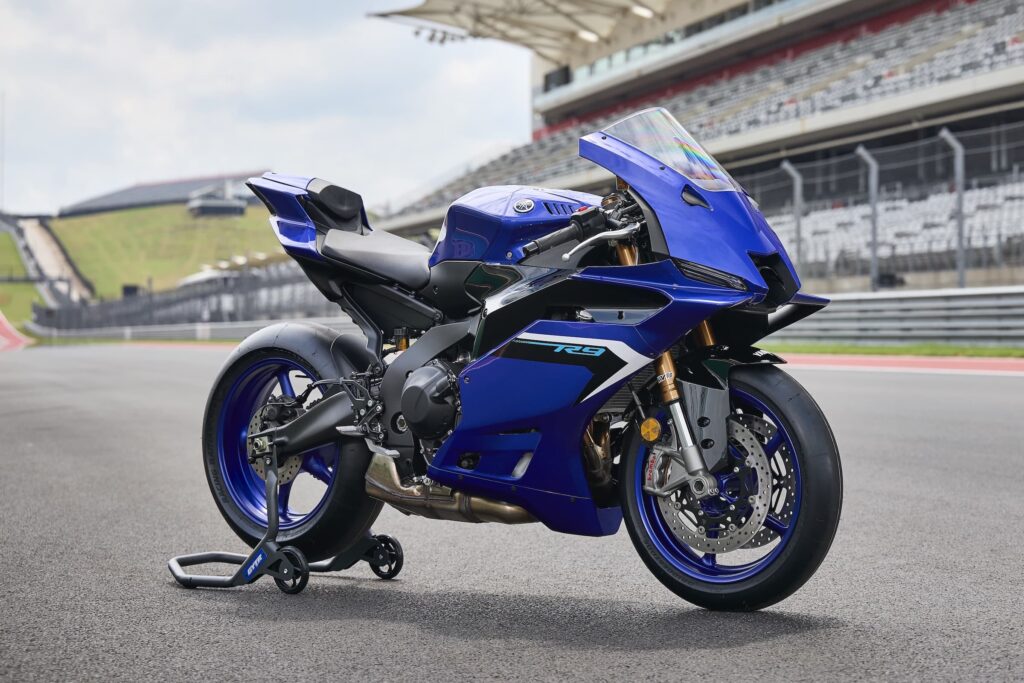
Are you obsessed with motorcycles?
Well, I am. That’s why I created this site — as an outlet. I love learning and sharing what others might find useful. If you like what you read here, and you’re a fraction as obsessed as I am, you might like to know when I’ve published more. (Check the latest for an idea of what you’ll see.)
A Brief Intro to the Yamaha YZF-R9
The YZF-R9 is a “street sport” bike. It’s “modestly powered” — it doesn’t make power north of 150 hp, unlike most liter-class bikes of similar displacement (even those of decades ago).
And even though it has what I’d call high spec for 15 years ago, the YZF-R9 is just modest spec by today in that it doesn’t have things like active electronic suspension or a high-end track-first electronics suite.
But the Yamaha YZF-R9 hits a sweet spot that’s likely to tickle a lot of potential buyers. It’s light, capable, good-looking, and has just the right amount of tech for most people.
Unlike the YZF-R7, which Yamaha released a few years prior, the R9 is the first of its name. There has been no R9 in Yamaha’s history. But there has been a sport bike made with a three-cylinder engine — the 1977 Yamaha XS750. It wasn’t particularly fast nor popular, but it had three cylinders, twin disc brakes (which was just coming into the mainstream), and a shaft drive, to boot.
You can’t talk much about the R9 without talking about its heart — the CP3 motor.
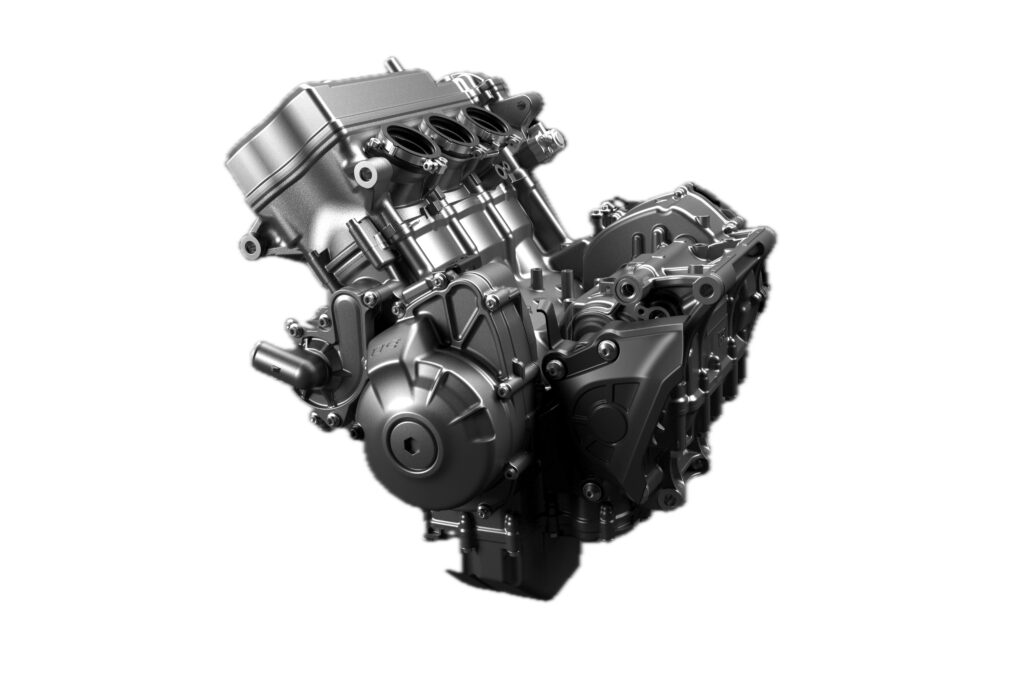
Only a few manufacturers mass-produce triples these days. Triumph has been doing it for a long time, MV Agusta has done it in small but consistent quantities, and Yamaha joined the party in 2014.
There’s nothing particularly unique about the CP3 motor’s design. It’s a three-cylinder liquid-cooled engine with dual overhead camshafts and four valves per cylinder. The firing order is dead even. So even though Yamaha calls it the “CP3” — a nod to the uneven firing order of the CP4 (“Crossplane Four”) motor they introduced in 2009 in the YZF-R1 — there’s nothing unusual about the crankshaft’s plane. In fact, Triumph has spiced things up with the firing order of its triples in recent years (the “T-Plane” 180-270-270 firing order, first introduced in the Triumph Tiger 900), but Yamaha has kept it even.
Historical Context for the YZF-R9 — How did we get here?
Very loosely, the YZF-R9 has two historical threads. The first is Yamaha Superbike line, whose heyday was the R1 and R6 era. In most markets, you can’t buy the R1 and R6 new as a street-legal bike anymore (you can still get them in the US, but they’re old models, not updated).
And the second line is the line that started with the CP3 motor in 2014.
What’s so interesting about the CP3 motor? It’s just an engine — nothing that exciting about its technology (dual overhead camshafts, 4 valves per cylinder, liquid cooling), nor its displacement (843 cc in the first gen, then 890 in the second), nor its power (somewhere in the 110-120 hp range at peak).
But the CP3 captured attention even in the 2014 FZ-09, for all its problems, because it is just so damn even. Check out Cycle World’s 2014 dyno of it. It holds a really flat torque curve from just 2000 rpm! And there’s a late-rpm surge, but not one that makes it “top end-heavy”, just rewarding to rev out.
That significant, early-to-arrive and even torque goes hand in hand with my favourite thing about the Yamaha triples — the original FZ-09 was light at 188 kg / 414 lb with a full tank. As Mitch Hedberg may have said, the modern Yamaha MT-09 still is light, but it used to be light, too.
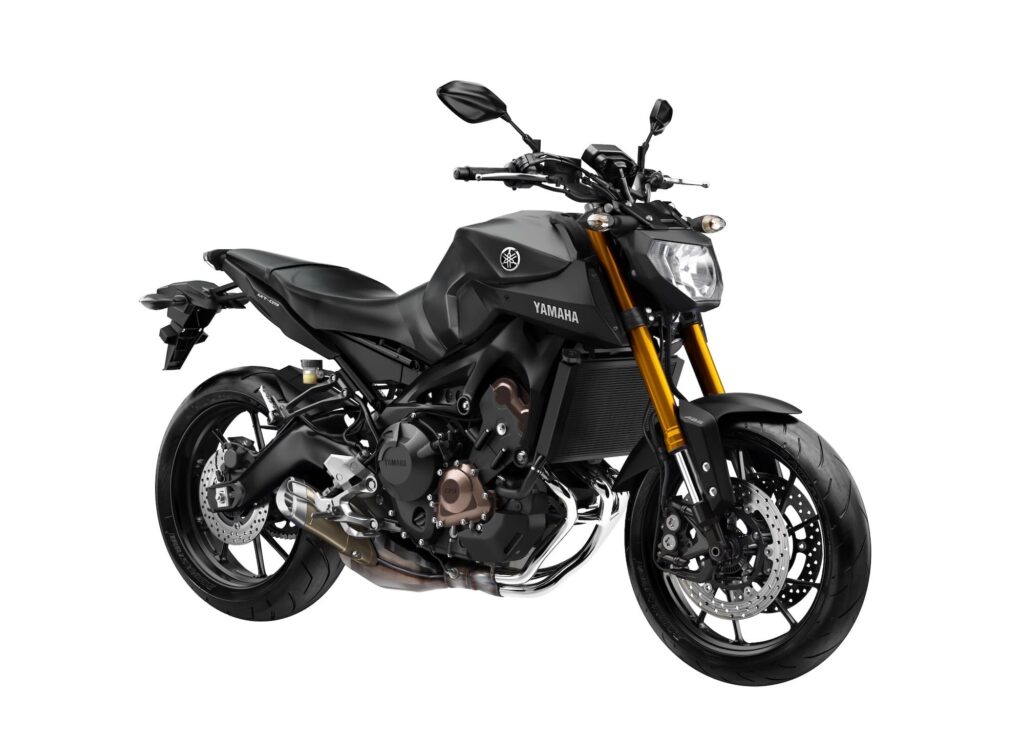
The original 2014 FZ-09 was popular (and still is second-hand) but it had a few fatal flaws. Firstly, it was nearly universally damned as “twitchy” — a combination of poor (on-off) fuelling and soft suspension. I recall riding even later model ones and finding them a little wild. That’s fun, and you can get used to it, but it’s a different experience from riding other bikes. Secondly, the suspension issue, which lends to the twitchiness, but which is an issue on its own once speeds and riding style go past the everyday.
If you buy one, you can refine all those things with a tune and some aftermarket love. The fuelling is just the eternal compromise between efficiency and emissions needed to get the right certifications for the bike. And suspension is an attempt to please everyone — the people on
Over time, Yamaha refined the FZ-09 package, refining the ride quality, and adding an SP version with even higher-spec suspension. I enjoyed later ones, but I think they really hit their stride with the 2021 Yamaha MT-09 SP. For me, that’s basically the perfect street bike. It’s good slow, it’s fun fast, and it does everything well. Everything!
People lust over fairing-clad sport bikes or dream of crossing continents on adventure bikes, but I’m of the highly subjective opinion that the lightweight naked sport bike does everything best. (OK, Supermoto guys may fight me over that claim, but we’re not on such dissimilar parts of the bike spectrum.) If you accept that claim, then I think the 2021+ MT-09 SP is the best bike you can buy if you can get past its looks.
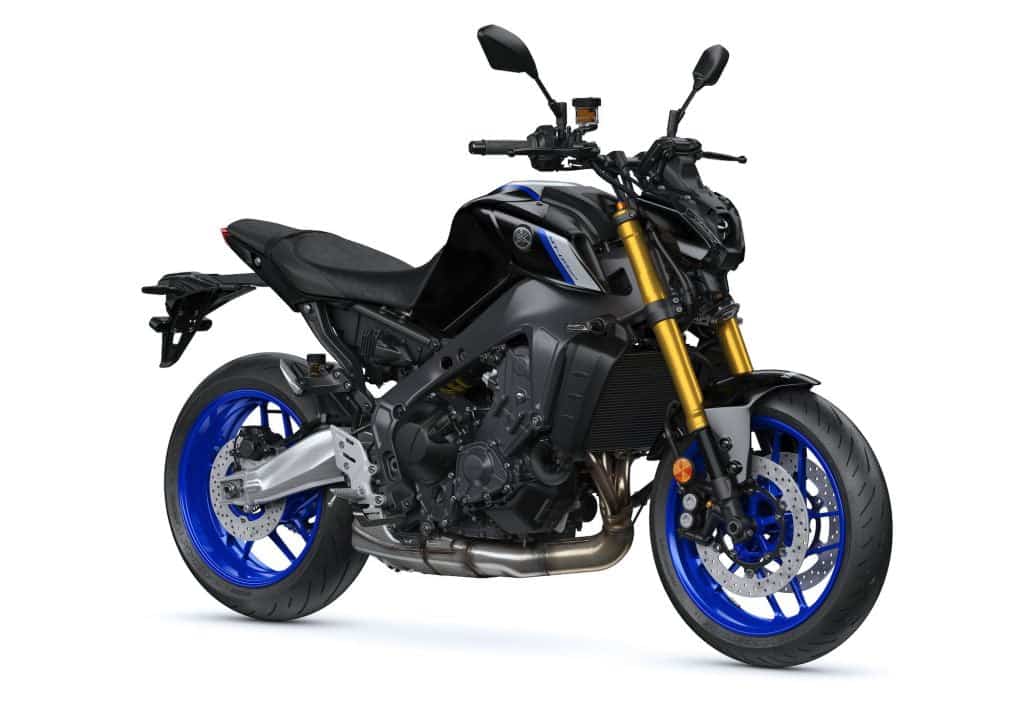
Nope, the 2021-onward MT-09 ain’t pretty. In fact, that’s the most functional-looking design I have seen in recent times. Damn me if it doesn’t get the job done, though. They reviewed the design in 2024, but it’s still the same type of thing — focusing almost entirely on the quality of the ride and not letting aesthetics dictate things. It’s just that the ride is so good that I forgive it.
You can also check out my full buyer’s guide to the FZ-09/MT-09, detailing changes until the present day.
Anyway, since launching the FZ-09, Yamaha broadened their offerings. Let’s have a quick look at those.
Yamaha’s CP3 Offerings Compared
Yamaha has released five different motorcycles all based on the same motor — and it appears they kept everything inside the engine the same, including the tune.
After the FZ-09 (and before they renamed it universally to the MT-09) they first released the FJ-09, which they later renamed to the Tracer 900, and then the Tracer 9 when the 890 version of the CP3 motor was released. Here it is in its latest form.
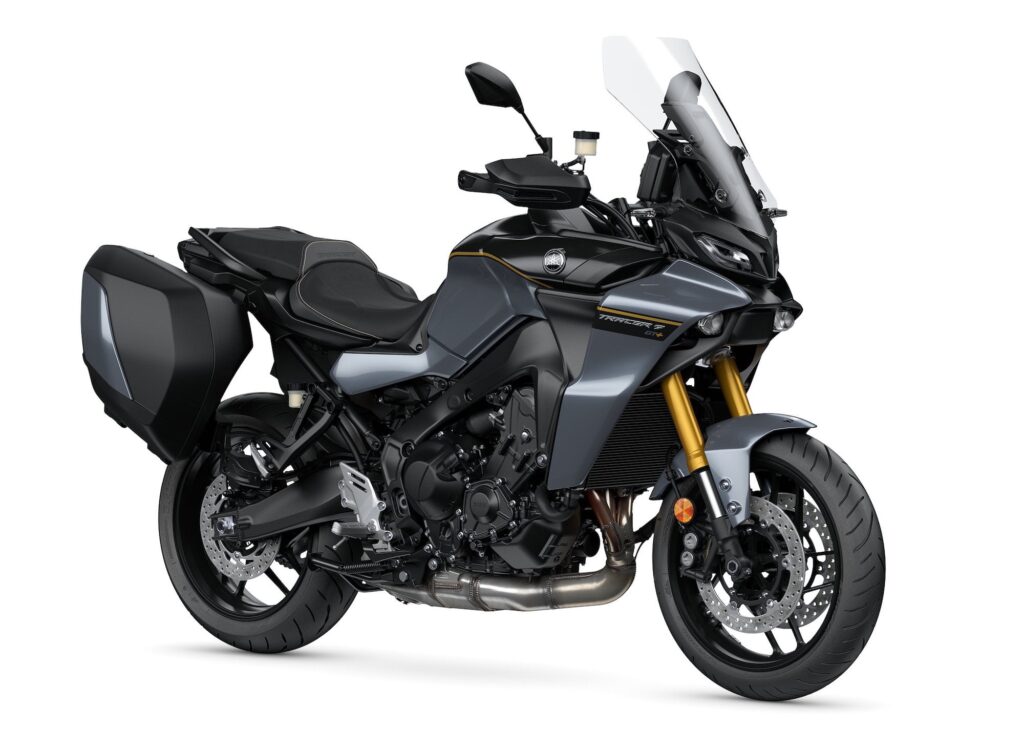
The Tracer started out as a “more comfortable FZ-09”. But it accidentally also was a better bike overall (I think, and only in factory form) initially because the weight and suspension made the wild motor more manageable!
But the Tracer is definitely the luxury version now. It doesn’t have just a windshield, luggage, centre stand, hand guards, and comfortable riding position — it has active cruise control, active electronic suspension, and a bigger TFT display. The weight and easier riding position takes away some of the aggressive nature of the MT-09.
You can definitely ride the Tracer 9 (or its predecessors) quickly. But it won’t as quickly bring out the wild child in you as its sportier siblings would.
Yamaha next released the XSR900.
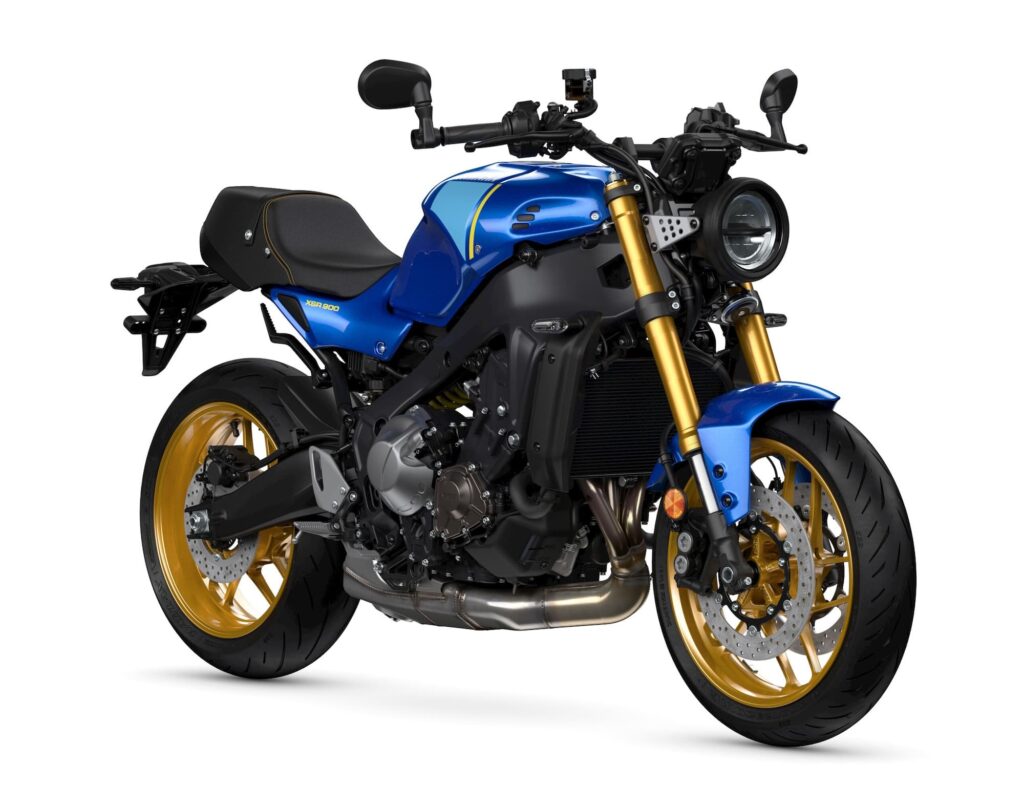
Yamaha has made these since 2016. They are the MT-09’s more retro sibling. They share a foundation (chassis, too), and most parts. I’m a huge sucker for a round headlight (the only two bikes in my stable now, both over two decades old have them), so I’ve always liked the XSR900.
Like the Tracer, the XSR’s suspension setup has made it an easier bike to ride than the original FJ-09 since launch. But still, it benefits from a tune.
The modern XSR (post 2022) has cornering ABS and even cruise control. It is really an excellent machine! In terms of components, it’s somewhere between the MT-09 and MT-09 SP. See more about it here.
There’s even the XSR900 GP, which is one of the most uniquely styled modern bikes in a generally verisimilitudinous design landscape.
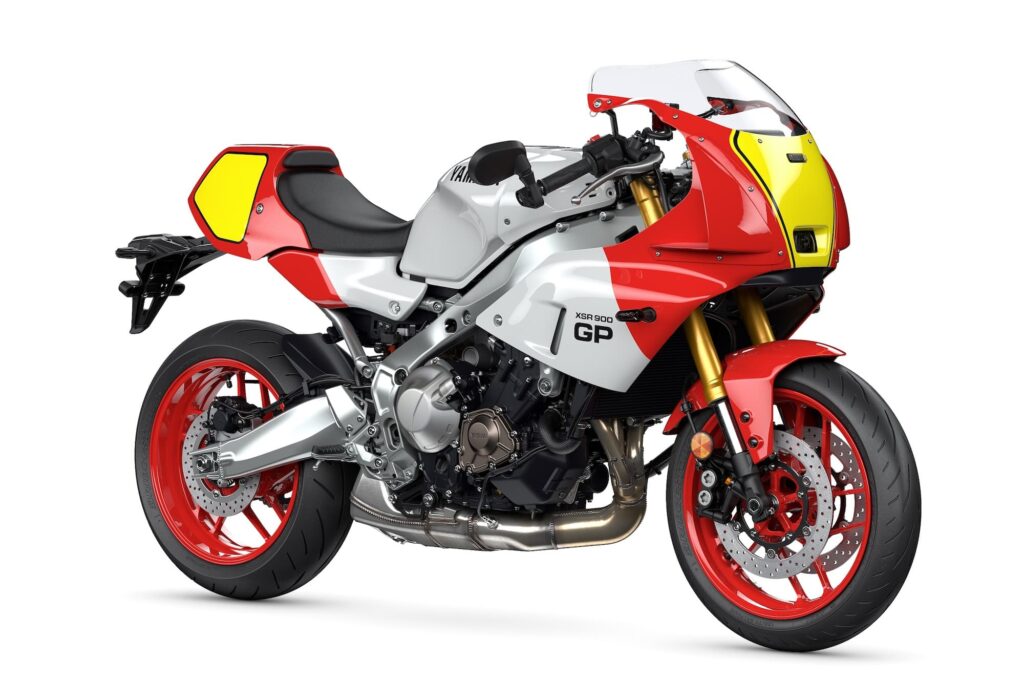
The XSR900 GP (more about it here) is more than a styling exercise. It has fully adjustable suspension (with high-speed and low-speed compression and rebound damping adjustability on both ends) and a full suite of rider aids. It has clip ons — but they’re “comfortable” level, similar to sport bikes of the late 90s and early 2000s.
And finally, there’s the Niken.

I must admit that as three-wheeled bikes go, these do look cool. It looks like Star Wars’ General Grievous in transformer mode. Those double front suspension units look like they’d beat the $&*@ out of me.
I haven’t ridden about the Niken, as I just don’t see many around, but I see the appeal. Front wheel traction is awesome. They’re still fast. The weight doesn’t mean you can’t wheelie them, according to better riders than I am. But a three-wheeled motorcycle is just too practical for me. If it were my only form of transport, and I rode it through all seasons, sure. I’m glad they exist.
What distinguishes the Yamaha YZF-R9 from the R7, R6, and R1?
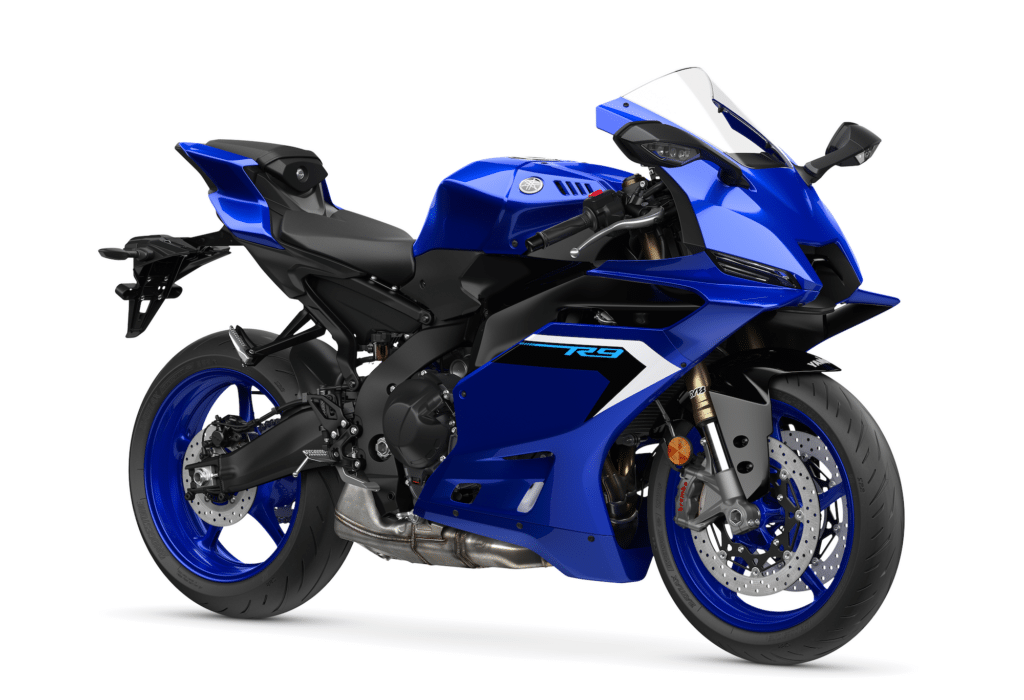
Looking at the YZF-R9, you’ll immediately notice that this is unabashedly a sport bike. It’s compact, has low clip-on bars, and a full fairing.
The YZF-R9 has a lot in common with the YZF-R7 (powered by the CP2 engine, the same as in the MT-07), and with the now-discontinued (for street use in most markets) YZF-R6 and YZF-R1.
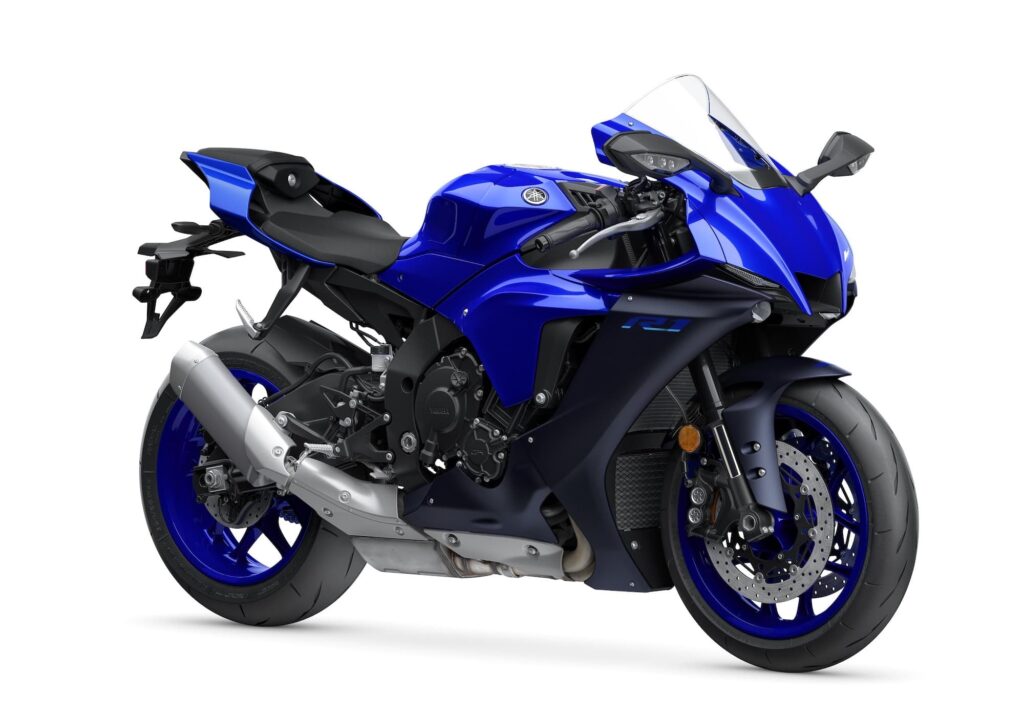
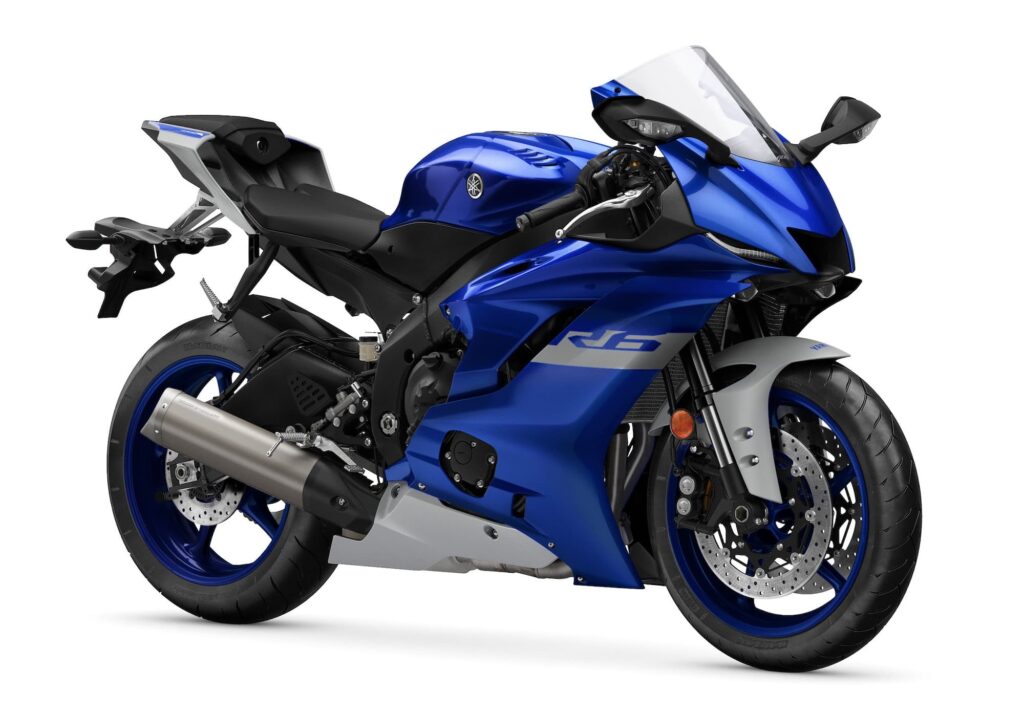
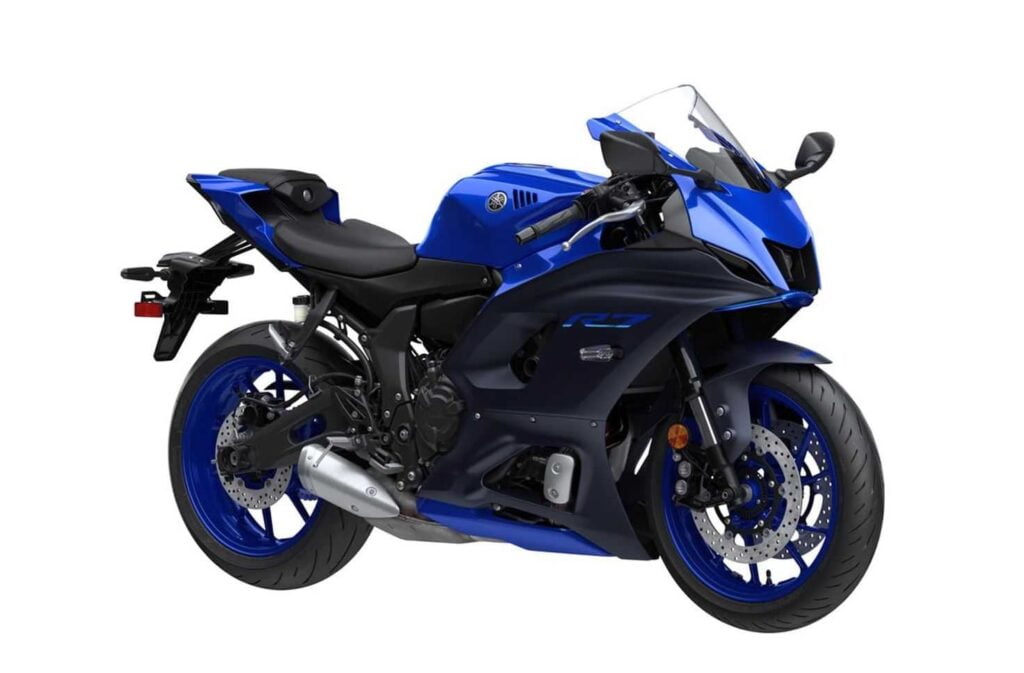
When the YZF-R7 replaced the YZF-R6, while people acknowledged that the R7 is a great bike and probably the better choice for many people, people were sad about the loss of the R6. No, the R6 isn’t the ideal street bike — it has tons of power up top and an aggressive riding position. Still, the uncompromising nature of the R6 is what made it special. Sure, for practicality I’d rather be in a Camry than a McLaren F1 for everyday use, but I know which one gets the heart racing.
Here’s my buyer’s guide to the R6, if you want to dive into history.
So people started talking about the R9 as soon as the R7 was made, years before any announcements. Browsing BikeEXIF and the like, you’ll find shops making up examples of what the R9 would be (and getting pretty close, actually).
The R6 was bonkers (when you hammer it, anyway), and the R1’s torque curve actually made the latter make more sense for everyday use — more torque down low means more usable power. But the R9 is the compromise that makes even more torque down low compared to a late-model R1 — it just doesn’t rev as high.
Here’s an overlay of the torque curves of the 890-cc CP3 motor vs the 2015+ latest-gen R1, for example. Source data is from Cycle World / Dyno Jet, here and here.
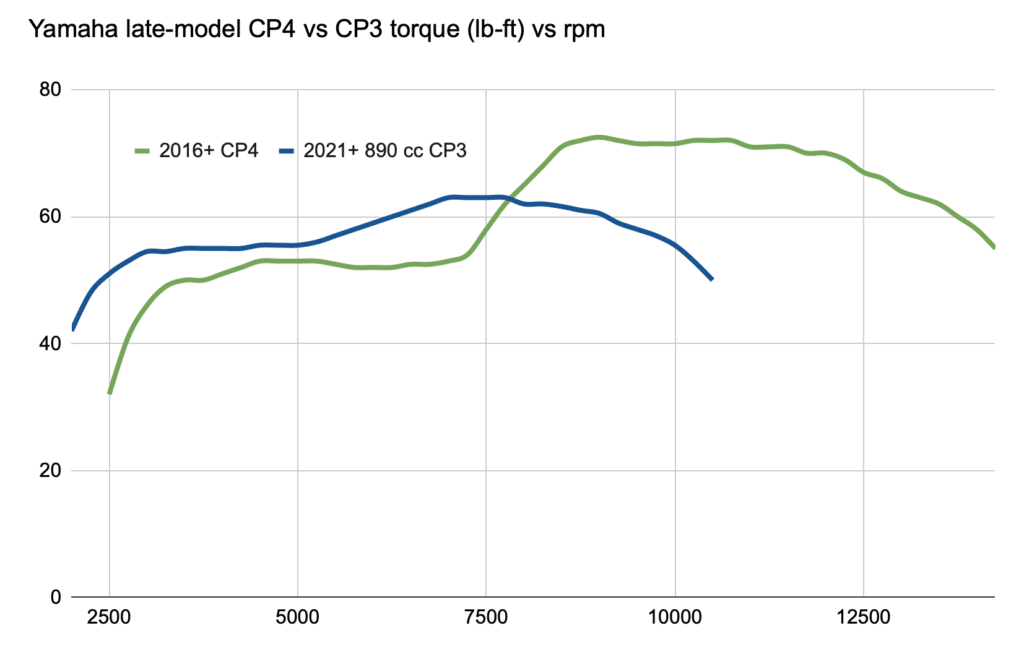
You can’t compare two torque curves directly — they’re from different days, machines, etc, which is why I didn’t convert them to metric units. It’s just the shape that counts. But even just looking at the order of magnitude of results, it’s obvious that the CP3 at least matches — and probably outperforms — the CP4 on torque delivery through to 7500 rpm.
Of course, gearing also plays an important part in how torque is delivered to the ground (the feeling of forward acceleration or thrust).
In everyday riding, I rarely get past 8000 rpm. On weekend riding, I redline it a few times in a day in the low gears, hitting whatever the limit is (definitely if it’s as low as 11-12k). So yeah, there’ll be times I’ll feel short-changed with the CP3. But in most cases, there’s enough “wahoo!” there for your average yahoo to have a lot of fun.
The earlier CP3 revved a little higher. That might have been more fun. Well, you can’t have it all… but you can have quite a lot. Here’s how the first and second CP3 engines compared (the YZF-R9 obviously has the second gen).
| Item | First gen CP3 | 2nd gen CP3 | Notes |
|---|---|---|---|
| Years | 2014-2021 (MT-09) | 2021+ (MT-09) | 2022+ on the XSR900, 2025+ on YZF-R1 |
| Capacity | 847 cc | 890 cc | Some sources say 889; bore and stroke calculates to 890 (see formulas page) |
| Bore / Stroke | 78 x 59.1 mm | 78 x 62.1 | Slightly longer stroke |
| Compression ratio | 11.5:1 | 11.5:1 | Same, surprisingly |
| Peak power | 84.6 kW / 115 PS / 113 bhp @ 10000 rpm | 87.5 kW / 119 PS / 117 hp @ 10000 rpm | Bit more |
| Peak torque | 87.5 Nm / 64.5 lb-ft @ 8500 rpm | 69 lb-ft / 93 Nm @ 7000 rpm | More torque, lower down |
| Peak RPM | 11300 rpm | 10600 rpm | Per various sources (Ivan’s performance, dyno readings) |
Compared to the R7, The R9 has more power, higher-spec gear (including Brembo Stylema calipers and even more adjustability in suspension) than the R7, and more ride aids, like cornering ABS and cruise control.
What about the YZF-R9’s riding position? The R9’s comfort level is, in a nutshell, somewhere between the aggressive R1’s riding position and the more comfortable R7’s position. The distance between the seat and the foot controls is larger, which means your legs aren’t as folded up. But the front clip-ons are still below the triple clamps and have no risers. They’re still slightly higher than on most modern sport bikes.
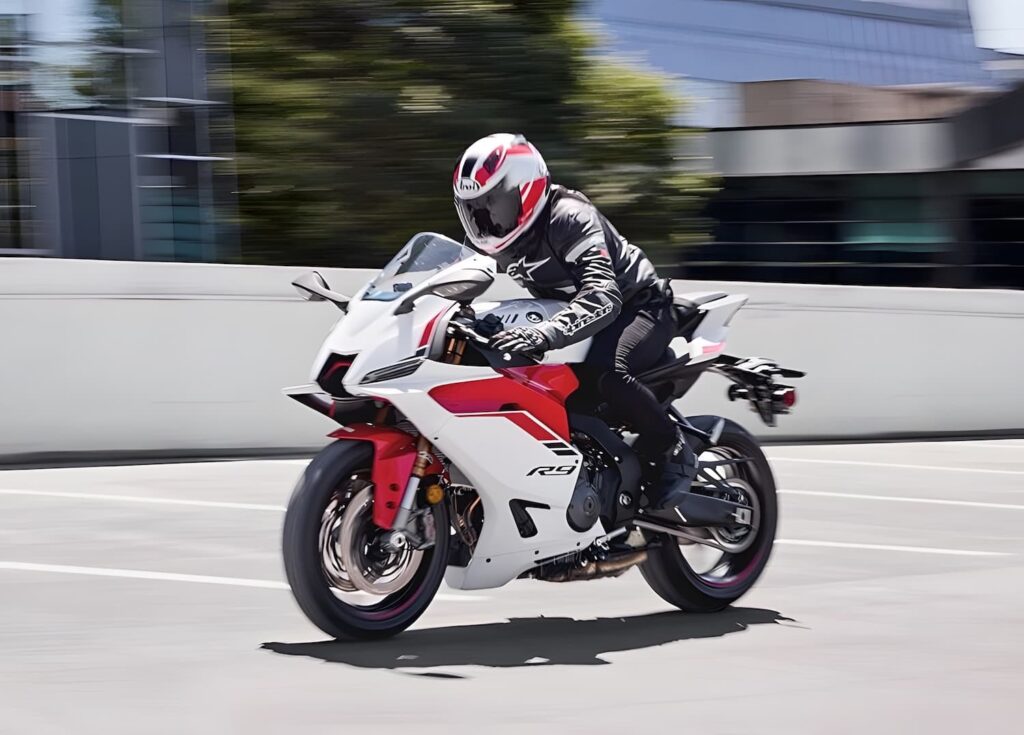
I like the sport bike riding position as I rarely ride for more than a few hours at a time, and try to focus on just “fun” riding. But I know that position would get old for most people if you want to do distance.
It even ups the ante over the last-gen R1 in some aspects of kit, including cruise control — just goes to show that the R9 is designed more for everyday riding. And the R6 never got cornering ABS. Nor did the R7.
For people riding around on the streets, the R9 may just be enough. But still, I know a large cohort of people will want to spend the extra dough for a full-fat literbike.
How does the YZF-R9 compare to other motorcycles on the market?
Where things get interesting is when you compare the YZF-R9 to other street sport bikes on the market. What does it compare to?
Basically, if I want to look at fairing-clad sport bikes that have mid-range tech and comfort options like cruise control and cornering ABS… then there is very little out there.
The closest competitor is the Street Triple RS. I’d include the Daytona 765, but it’s a limited release, very expensive bike, not really designed for street use. The Street Triple RS does indeed nearly have it all (barring a baffling display whose design I hate), but it’s more obviously a competitor to the MT-09 SP, not the YZF-R9.
There’s also the Ducati Supersport. In the “middleweight sportbike” class, the Supersport stands out for having an L-twin engine. It’s of the Testastretta-11 engine series, which has fairly wide valve service intervals, but still has camshaft belts that need to be replaced every five years.
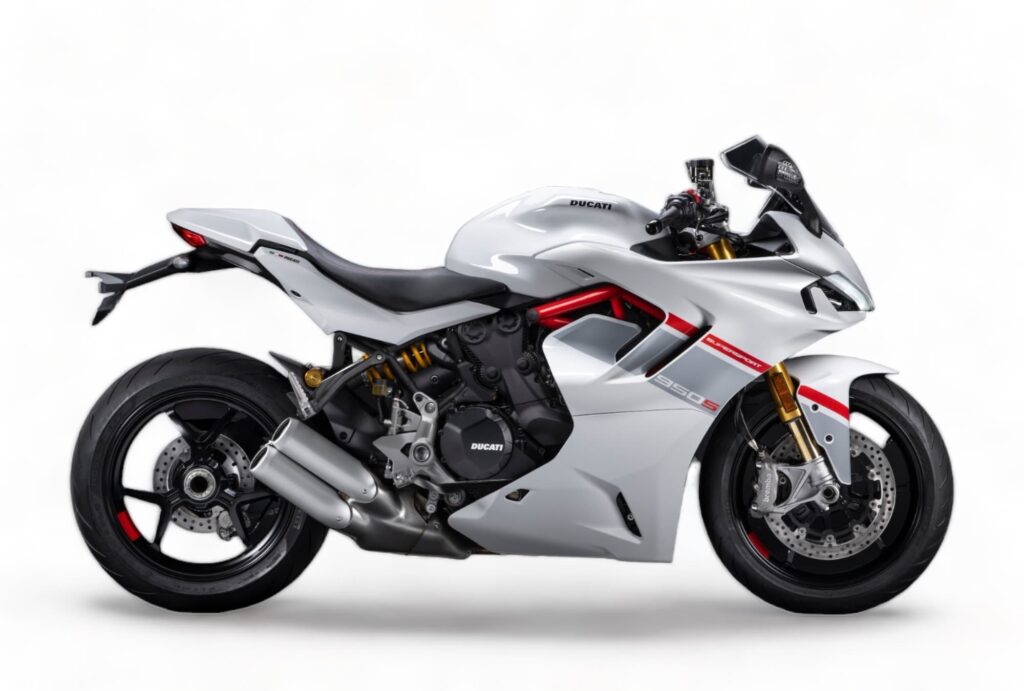
On the Ducati Supersport you nearly have it all, including the burble of a Ducati L-twin, and even get a single-sided swingarm. You get most ride aids, including cornering ABS (which is on nearly all the Ducati line barring very entry-level models), but no cruise control.
Finally, MV Agusta does make some interesting stuff in the mid-capacity range, like the Superveloce 800. It has a smaller, higher-revving, much higher power engine — a 798 cc triple that tops out at 140 hp. The Superveloce 800 the whole gamut of ride aids and styling to boot. Pretty good company to keep… MV Agustas are expensive, rare, and very easy on the eye.
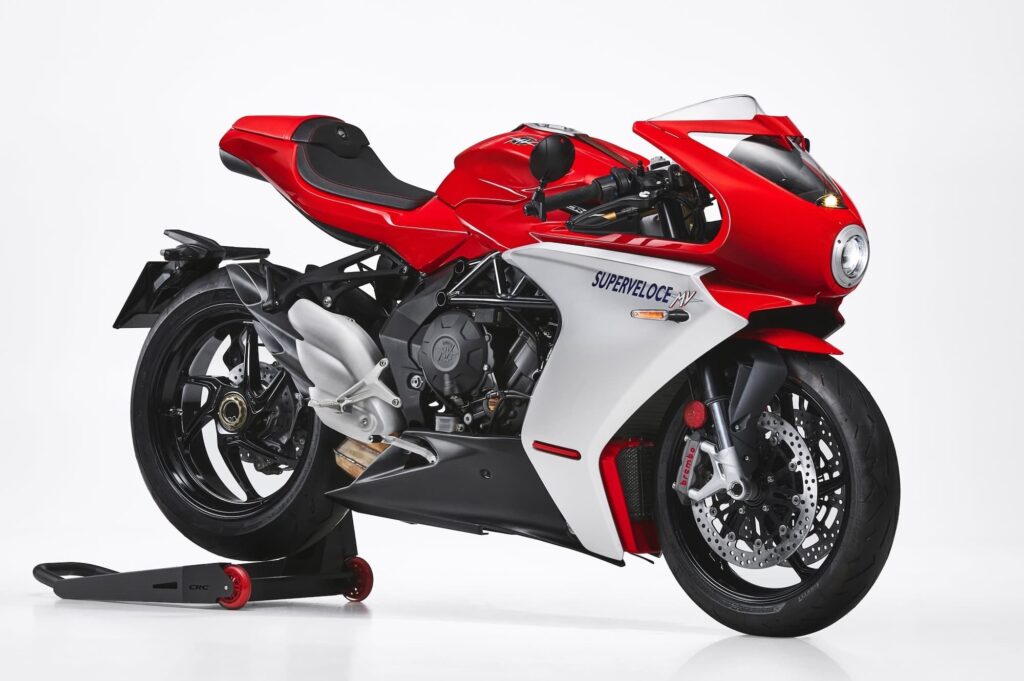
You’d be a brave soul to take something like that to the track. I think you’d pay more in insurance premiums than I pay in gas.
Anyway, I genuinely don’t think there’s another competitor to the R9. Other manufacturers do make middleweight sport bikes, but they’re more entry-level, competing with the R7. Most don’t even have the engines on hand for it. I’d be curious to see if Kawasaki shoehorns the Z900’s enigne into a sportbike chassis with fairings, maybe calling it a Ninja 900, or if Triumph makes a Daytona 765 for mass consumption, not just a “Moto2” version. One can dream!

